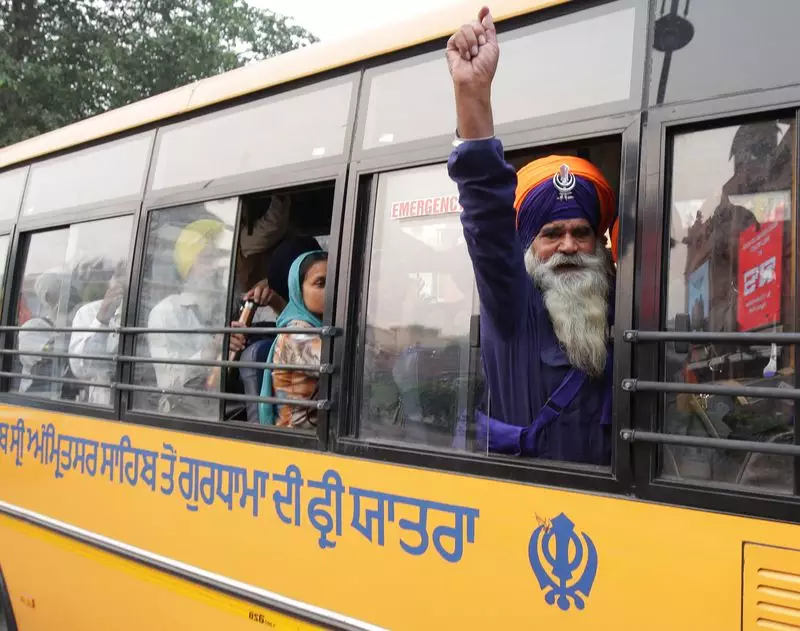
In a momentous development for cross-border religious tourism, the first contingent of Sikh pilgrims has crossed into Pakistan through the Kartarpur Corridor to celebrate Guru Nanak Dev Ji's Gurpurb. This historic pilgrimage marks the first such journey since the traumatic events of Operation Bluestar in 1984, representing a significant milestone in India-Pakistan religious diplomacy.
A New Chapter in Religious Pilgrimage
The 595-strong jatha, led by SGPC President Harjinder Singh Dhami, embarked on their spiritual journey from Dera Baba Nanak in Gurdaspur district early Thursday morning. Their destination: the sacred Gurdwara Darbar Sahib in Kartarpur, the final resting place of Guru Nanak Dev Ji, where they will participate in three days of special religious ceremonies.
"This pilgrimage carries immense emotional and historical significance," explained Dhami as the group prepared to cross the border. "We are witnessing the revival of a tradition that was interrupted for decades, and our prayers are for peace and continued access to our holy sites."
Notable Absence of NRI Pilgrims
In a departure from previous arrangements, this year's pilgrimage proceeds without the participation of Non-Resident Indian (NRI) pilgrims. The Pakistani government's decision to exclude NRIs from the approved pilgrim list has created both logistical challenges and diplomatic questions about the future of religious tourism between the two nations.
The jatha's composition reflects careful planning by the Shiromani Gurdwara Parbandhak Committee (SGPC), which has organized special religious programs and ceremonies to honor the 554th Prakash Gurpurb of Guru Nanak Dev Ji. Pilgrims expressed both excitement and reverence as they crossed the modern immigration facilities at the Kartarpur Corridor.
Historical Context and Future Implications
The resumption of this pilgrimage route holds profound historical significance. The Kartarpur Corridor, operational since 2019, represents one of the few functional bridges between India and Pakistan, serving as a vital religious corridor despite ongoing political tensions between the neighboring countries.
As the pilgrims proceed with their religious observances, all eyes remain on how this development might influence future religious tourism and cross-border cultural exchanges. The successful completion of this pilgrimage could pave the way for more regular and expanded access to holy sites that hold deep spiritual meaning for the Sikh community worldwide.





